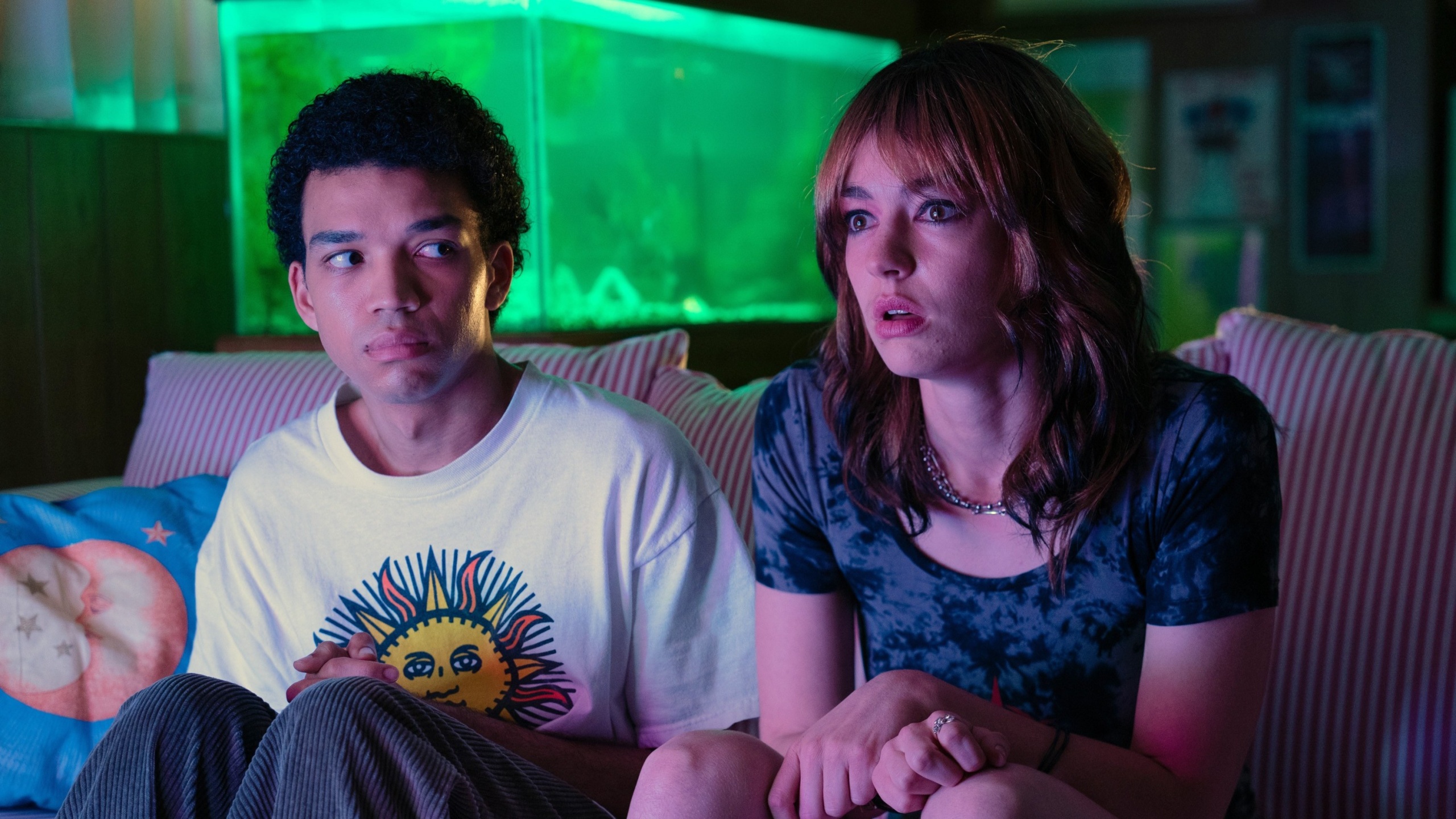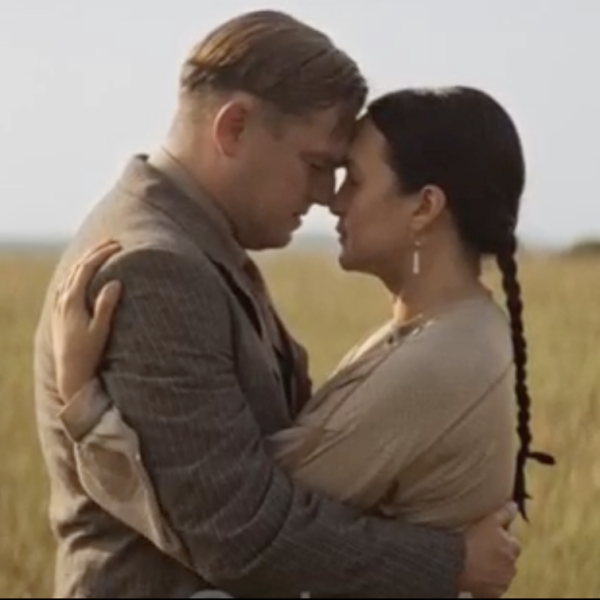
Sinister and liberating in equal measure (and often at the same time), Jane Schoenbrun’s ultra-lo-fi “We’re All Going to the World’s Fair” leveraged the inherent loneliness of webcams and the performative danger of online creepypasta into a haunting portrait of the potentially dysphoric relationship between screens and identity in the internet age. The kind of sui generis shot in the dark that feels like it could only have been made by someone who wasn’t sure if anyone would see it, Schoenbrun’s first movie is one of the rare coming-of-age films that manages to embody the full dread and possibility of self-recognition, and for that reason it almost immediately resonated with an audience of people — trans people in particular — who’d been waiting for something like “We’re All Going to the World’s Fair” since before they had the language to know how much they needed it.
Another, more explicitly trans meditation on the role that media can play in revealing people to themselves, Schoenbrun’s astonishing second feature manages to retain the seductive fear of their micro-budget debut and deepen its thrilling wounds of discovery even while examining them at a much larger scale. If “We’re All Going to the World’s Fair” was a 360p snapshot of dysphoria in motion, “I Saw the TV Glow” is an intimate landscape shot with the ultra-vivid resolution of a recurring dream; it marries the queer radicality of a Gregg Araki film with the lush intoxication of a Gregory Crewdson photo, and finds Schoenbrun holding on to every inch of their vision as they make the leap from outsider artist to A24-stamped auteur. This is a movie that knows it will be seen (or was at least financed with that expectation), and yet, to an even greater degree than Schoenbrun’s debut, it’s also a movie about how the things people watch can have the power to see them in return. Even the parts of themselves they might be hiding from. Even the parts of themselves they aren’t ready to name yet.
Arresting from the start and only increasingly mesmeric as it begins to map the liminal space between truth and fiction that exists inside both of its lead characters, “I Saw the TV Glow” recreates a certain mind-pocket of the ’90s as vividly as “We’re All Going to the World’s Fair” captured its strange corner of the internet. Its surprisingly far-reaching story begins when Owen (Ian Foreman, who later ages into Justice Smith) is just a quiet seventh-grader in suburbia whose parents won’t let him stay up late enough to watch his favorite shows. His well-intentioned mom (Danielle Deadwyler) still treats him like a child, and his menacing dad seems to resent any developments that might threaten his own control over the family (often framed out as more of a dark presence than a real person, he’s played by ’90s icon Fred Durst, whose music spoke to outsiders even as its fandom refused to make room for them).
Owen might suffocate to death inside of his own adolescent cocoon if not for a chance encounter with a glowering and monotone gay ninth-grader named Maddy (a remarkable Brigette Lundy-Paine, their eyes afire with the need to share — and eventually trace — the signal that calls out to her character from another world). They bond over a mutual interest in Maddy’s favorite TV show, a queer-coded, “Are You Afraid of the Dark?”-esque YA horror drama called “The Pink Opaque.” Maddy is obsessed with it, and knows every nuance of its story about two physically distant teenage girls (played by “Madeline’s Madeline” star Helena Howard and Snail Mail rocker Lindsey Jordan) whose psychic connection makes them a threat to an evil, moon-shaped monster known as Mr. Melancholy. The big bad’s Méliès-esque design is one of a million little details inspired by the Smashing Pumpkins’ epochal double album “Mellon Collie and the Infinite Sadness,” each of which adds to this movie’s soaring mix of terror and transcendence.
As Owen and Maddy rise through the grades at Void High School (or VHS), their terse but unshakeable friendship entirely shaped around “The Pink Opaque,” the show appears to age up alongside them (it’s hard to overstate how perfectly “I Saw the TV Glow” captures the furtive danger of watching SNICK a little past your comfort zone on a dark Saturday night). Schoenbrun never really pivots away from the “you had to be there” nostalgia baked into the program’s killer humanoid ice cream cones and “Alex Mack”-level melodrama, as that nostalgia — the tug of staying “true” to your memories, even if it starts to feel as if they’ve always belonged to someone else — is at the heart of the film’s internal conflict, but “The Pink Opaque” gradually begins to borrow more from older-skewing shows as this movie goes along.
The monster-of-the-week stuff impinges on “Buffy the Vampire Slayer” as Owen starts to question his relationship to his body, while Maddy’s abusive home life and eventual disappearance channel the domestic horror of David Lynch’s “Twin Peaks.” When our heroes eventually reconnect after a long separation, they do so at a hangout spot that seems to exist in the middle circle of the Venn Diagram between those two shows, even though it exclusively belongs to the world of “The Pink Opaque” (which is already long-canceled by that point). How did Maddy and Owen find themselves inside of their favorite show, why don’t they seem to notice that they’ve crossed over from one side of the TV screen to the other, and what the hell is Phoebe Bridgers doing there? I mean, besides contributing a couple of songs to an instantly iconic, queer-heavy soundtrack that’s held together by a Yeule cover of Broken Social Scene’s “Anthems for a Seventeen Year Old Girl” and peaks with a fuzzy new Caroline Polachek banger so immense it demands an entire scene of its own.
Schoenbrun isn’t shy about answering such questions, but their phantasmagorical script is only interested in doing so on its own terms. Entrusting so much of this story to metaphor might have been limiting in lesser hands, but “I Saw the TV Glow” is never the least bit didactic in its approach to the feeling that its characters might be sleepwalking through someone else’s lives, even when it literalizes Maddy’s suspicion that her actual body is buried on the other side of the TV screen. It’s a high-wire balancing act that Schoenbrun pulls off because they never lose sight of “The Pink Opaque” as both a portal and a prison.
The show is like a beacon from another planet for these characters, and it only rings louder in Owen’s ears after his dad writes it off as “a show for girls.” It’s as if there were a subliminal message underneath each new episode, like an alien text that only Owen and Maddy could hear. As Maddy puts it: “Sometimes ‘The Pink Opaque’ feels more real than real life.”
But if Mr. Melancholy gave him the words to articulate the feeling that “someone took a shovel and dug out my insides,” he also crystallized the fear that stops Owen from opening himself up to see if that’s true. “The Pink Opaque” brought Owen and Maddy together, but it also left at least one of them clinging to a formative piece of fiction so desperately that they may never find the courage to let go — to let the TV glow from the inside out, and not just the outside in. By entwining the agony of self-denial with the unimaginable courage it takes to reconcile that degree of dissociation (unimaginable to me, anyway), Schoenbrun’s film soon mutates into a rivetingly freeform race through the unstable overlap between living a life and feeling like you’re watching one play out in front of you from behind a pane of glass like an episode of television.
That middle ground can be utterly horrifying, thanks in part to the film’s nightmare-worthy creature effects, and the surprising ways that Schoenbrun finds to deploy them. But nothing in this movie is scarier or more bittersweet than the idea that it’s easier for people — trans people most of all — to see themselves in fiction than it is in real life, and it stands to reason that the film’s most chilling and poignant scene is just a simple, soul-excavating monologue that Lundy-Paine delivers with almost unbearable intensity. In that moment, Maddy makes it almost impossible for Owen to escape the truth inside his chest, or to ignore “The Pink Opaque”’s hollow promise that things “can’t hurt you if you don’t think about them.” Schoenbrun doesn’t tiptoe around the social discomfort of letting that message sink in, but the tenderly deranged, Kaufman-esque final sequence they design for this movie is unforgettable for the power it finds in watching someone awaken to the beauty of their own reflection.
Grade: A
“I Saw the TV Glow” premiered at the 2024 Sundance Film Festival. A24 will release the film in theaters later this year.




